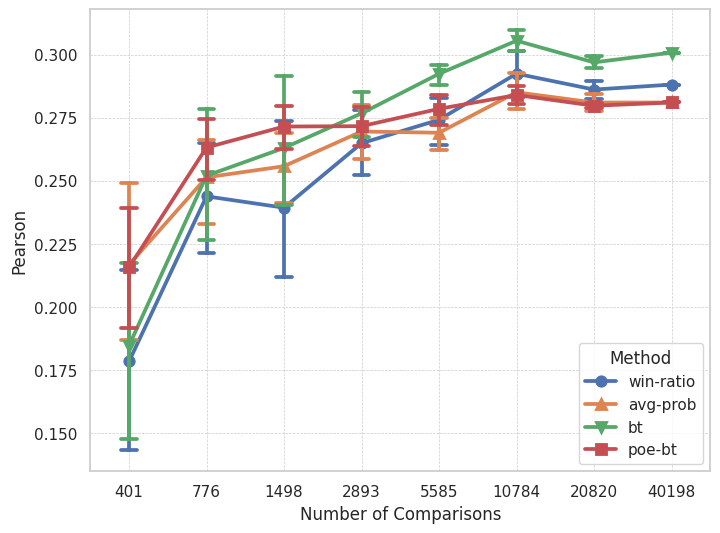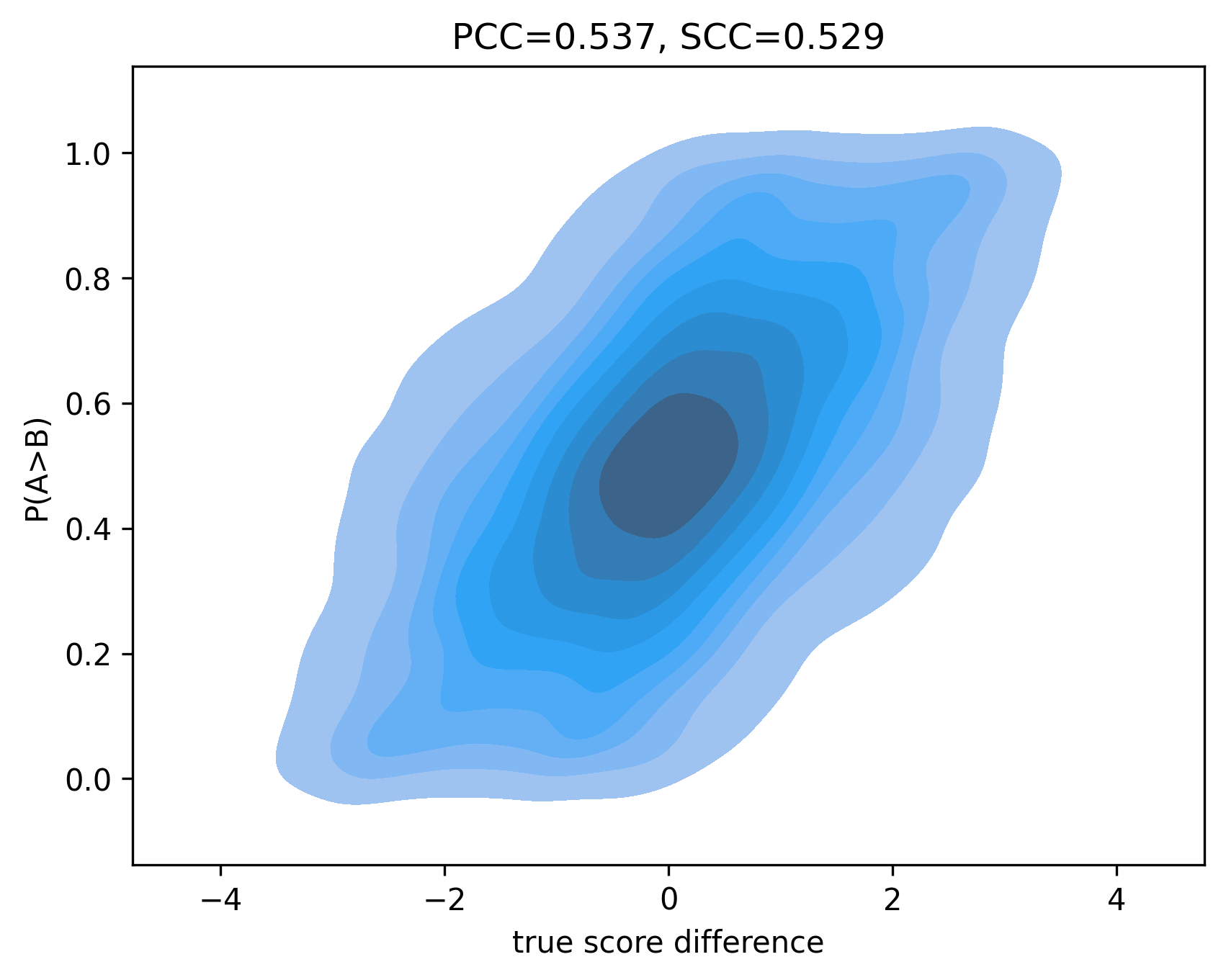Finetuning LLMs for Comparative Assessment Tasks

0

Sign in to get full access
Overview
- The paper explores techniques for finetuning large language models (LLMs) to perform well on comparative assessment tasks.
- Comparative assessment involves evaluating and ranking multiple options or alternatives based on specific criteria.
- The researchers investigate approaches for adapting pre-trained LLMs to effectively handle these types of comparative analysis problems.
Plain English Explanation
Imagine you're trying to decide which laptop to buy. You might look at factors like the processor speed, battery life, and price, and then compare the different models to figure out which one is the best fit for your needs. This type of comparative assessment is a common task that people and organizations need to perform, whether it's choosing a product, evaluating job candidates, or assessing the quality of different research papers.
The researchers in this paper recognized that large language models (LLMs) - the powerful AI systems that can understand and generate human-like text - could potentially be very useful for these kinds of comparative assessment tasks. However, the LLMs are typically trained on a general corpus of text, and may not be optimized for the specific requirements of comparative analysis.
So the researchers explored ways to "finetune" the LLMs - to adapt and refine them - so that they would perform better at comparative assessment. They tested different techniques, like training the models on specialized datasets or modifying the model architecture, to see which approaches led to the most accurate and insightful comparative judgments.
The key idea is that by tailoring the LLMs to be better at comparative tasks, they could become powerful tools to help humans make more informed decisions, identify the best options, and draw meaningful insights from complex information. This could have applications in areas like product recommendations, job hiring, and academic paper evaluation.
Technical Explanation
The paper investigates approaches for finetuning large language models (LLMs) to excel at comparative assessment tasks. Comparative assessment involves evaluating and ranking multiple alternatives based on specific criteria, such as choosing the best laptop or research paper.
The researchers first review related work on adapting LLMs for various application domains. They note that while LLMs have shown strong performance on a wide range of natural language processing tasks, their capabilities have not been extensively explored for comparative assessment problems.
The core of the paper focuses on different techniques for finetuning LLMs for comparative assessment tasks:
-
Dataset Curation: The researchers curate specialized datasets that capture comparative assessment scenarios, such as product reviews where consumers directly compare multiple items.
-
Architectural Modifications: They experiment with tweaks to the LLM architecture, like adding specialized comparison-focused modules or modifying the loss function, to better equip the models for comparative reasoning.
-
Task-Specific Finetuning: The LLMs are finetuned on the curated comparative datasets using techniques like prompt engineering and reinforcement learning to further hone their comparative assessment capabilities.
Through extensive experimentation, the researchers evaluate the performance of the finetuned LLMs on a range of comparative assessment benchmarks. They find that the models are able to outperform strong baselines, demonstrating an enhanced ability to accurately evaluate and rank multiple alternatives.
The insights from this work suggest that with the right finetuning approaches, LLMs can become powerful tools for supporting high-stakes comparative decision-making in domains like product selection, job candidate evaluation, and academic peer review.
Critical Analysis
The paper presents a compelling approach for adapting large language models to excel at comparative assessment tasks. However, the researchers acknowledge several caveats and areas for further exploration:
-
Dataset Limitations: The curated comparative assessment datasets, while valuable, may not fully capture the nuances and complexities of real-world comparative scenarios. Expanding the dataset diversity could lead to more robust model performance.
-
Evaluating Broader Impacts: The paper focuses on the technical details of the finetuning approaches, but does not delve into potential societal implications or ethical concerns around using AI systems for high-stakes comparative assessments. Further research is needed to understand and mitigate potential biases or misuses.
-
Generalization and Scalability: While the finetuned LLMs show promising results on the benchmark tasks, it's unclear how well the approaches would scale to handle large-scale, open-ended comparative assessment problems encountered in practice. Evaluating the models' real-world generalization capabilities is an important next step.
-
Explainability and Transparency: As these LLM-powered comparative assessment systems become more prominent, there will be a growing need for improved model interpretability and transparency, so that users can understand the reasoning behind the system's judgments and recommendations.
Overall, the paper presents an exciting technical advancement, but also highlights the importance of considering the broader implications as these AI-powered comparative assessment tools become more widely adopted.
Conclusion
This research demonstrates that with the right finetuning techniques, large language models can be adapted to excel at comparative assessment tasks. By curating specialized datasets, modifying model architectures, and performing targeted finetuning, the researchers were able to create LLMs capable of accurately evaluating and ranking multiple alternatives based on specific criteria.
The findings suggest that these finetuned LLMs could become powerful decision-support tools, helping humans make more informed choices in domains like product selection, job candidate evaluation, and academic peer review. However, the researchers also identify important caveats and areas for further investigation, such as dataset limitations, broader societal impacts, and the need for improved model interpretability.
As AI systems become increasingly integrated into high-stakes comparative assessment processes, it will be critical to continue exploring ways to ensure these technologies are trustworthy, transparent, and aligned with human values. The insights from this paper represent an important step forward in realizing the potential of large language models as partners in comparative decision-making.
This summary was produced with help from an AI and may contain inaccuracies - check out the links to read the original source documents!
Related Papers


0
Finetuning LLMs for Comparative Assessment Tasks
Vatsal Raina, Adian Liusie, Mark Gales
Automated assessment in natural language generation is a challenging task. Instruction-tuned large language models (LLMs) have shown promise in reference-free evaluation, particularly through comparative assessment. However, the quadratic computational complexity of pairwise comparisons limits its scalability. To address this, efficient comparative assessment has been explored by applying comparative strategies on zero-shot LLM probabilities. We propose a framework for finetuning LLMs for comparative assessment to align the model's output with the target distribution of comparative probabilities. By training on soft probabilities, our approach improves state-of-the-art performance while maintaining high performance with an efficient subset of comparisons.
Read more9/25/2024


0
Efficient LLM Comparative Assessment: a Product of Experts Framework for Pairwise Comparisons
Adian Liusie, Vatsal Raina, Yassir Fathullah, Mark Gales
LLM-as-a-judge approaches are a practical and effective way of assessing a range of text tasks, aligning with human judgements especially when applied in a comparative assessment fashion. However, when using pairwise comparisons to rank a set of candidates the computational costs scale quadratically with the number of candidates, which can have practical limitations. This paper introduces a Product of Expert (PoE) framework for efficient LLM Comparative Assessment. Here individual comparisons are considered experts that provide information on a pair's score difference. The PoE framework combines the information from these experts to yield an expression that can be maximized with respect to the underlying set of candidates, and is highly flexible where any form of expert can be assumed. When Gaussian experts are used one can derive simple closed-form solutions for the optimal candidate ranking, as well as expressions for selecting which comparisons should be made to maximize the probability of this ranking. Our approach enables efficient comparative assessment, where by using only a small subset of the possible comparisons, one can generate score predictions that correlate as well to human judgements as the predictions when all comparisons are used. We evaluate the approach on multiple NLG tasks and demonstrate that our framework can yield considerable computational savings when performing pairwise comparative assessment. When N is large, with as few as 2% of comparisons the PoE solution can achieve similar performance to when all comparisons are used.
Read more6/11/2024


0
Analyzing Large Language Models for Classroom Discussion Assessment
Nhat Tran, Benjamin Pierce, Diane Litman, Richard Correnti, Lindsay Clare Matsumura
Automatically assessing classroom discussion quality is becoming increasingly feasible with the help of new NLP advancements such as large language models (LLMs). In this work, we examine how the assessment performance of 2 LLMs interacts with 3 factors that may affect performance: task formulation, context length, and few-shot examples. We also explore the computational efficiency and predictive consistency of the 2 LLMs. Our results suggest that the 3 aforementioned factors do affect the performance of the tested LLMs and there is a relation between consistency and performance. We recommend a LLM-based assessment approach that has a good balance in terms of predictive performance, computational efficiency, and consistency.
Read more6/14/2024


0
New!Aligning Human and LLM Judgments: Insights from EvalAssist on Task-Specific Evaluations and AI-assisted Assessment Strategy Preferences
Zahra Ashktorab, Michael Desmond, Qian Pan, James M. Johnson, Martin Santillan Cooper, Elizabeth M. Daly, Rahul Nair, Tejaswini Pedapati, Swapnaja Achintalwar, Werner Geyer
Evaluation of large language model (LLM) outputs requires users to make critical judgments about the best outputs across various configurations. This process is costly and takes time given the large amounts of data. LLMs are increasingly used as evaluators to filter training data, evaluate model performance or assist human evaluators with detailed assessments. To support this process, effective front-end tools are critical for evaluation. Two common approaches for using LLMs as evaluators are direct assessment and pairwise comparison. In our study with machine learning practitioners (n=15), each completing 6 tasks yielding 131 evaluations, we explore how task-related factors and assessment strategies influence criteria refinement and user perceptions. Findings show that users performed more evaluations with direct assessment by making criteria task-specific, modifying judgments, and changing the evaluator model. We conclude with recommendations for how systems can better support interactions in LLM-assisted evaluations.
Read more10/2/2024